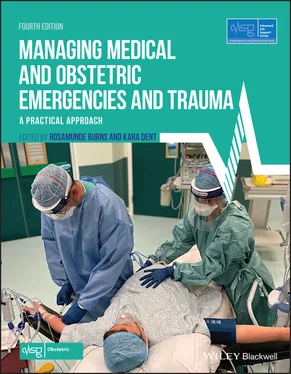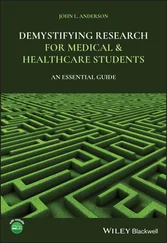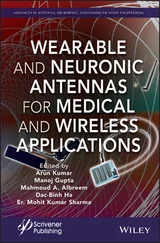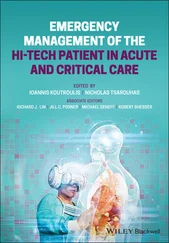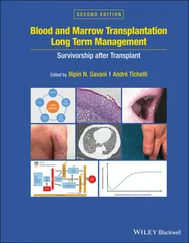| Situation |
Identify yourself, identify your patient and where you are calling from |
| ‘I am calling because …’ be specific about your concern |
| Background |
Set out the context of the admission, giving significant medical history, what operation/procedure has been had, any important blood results and recent observations. Outline her normal condition |
| Assessment |
Give your assessment of the situation |
| ‘I think that she has suffered a …’ |
| ‘I do not know what the problem is but I am very concerned about her deterioration …’ |
| Recommendation |
Here you need to be very specific in what you want the receiver to do |
| ‘I need you to come immediately …’ |
| ‘I need you to come or in the next 10 minutes …’ |
| ‘I would like to transfer her immediately to labour ward because …’ |
This common symptom can arise due to the normal respiratory adaptation to pregnancy, is gradual in onset and is usually noticed by the woman when she is talking or at rest. In normal pregnancy, there is a 40–50% increase in minute ventilation, mostly owing to an increase in tidal volume rather than respiratory rate and this leads to the subjective awareness of breathing. A mild, fully compensated respiratory alkalosis is therefore normal in pregnancy (see Table A5.1in Appendix 5.1).
However, in any pregnant woman complaining of breathlessness the ‘red flag’ features (Table 5.2) must be sought during history taking and acted upon.
The differential diagnosis of breathlessness in pregnancy includes:
Anaemia
Respiratory causes: asthma, pneumonia, pneumothorax, pulmonary embolus, pulmonary oedema
Cardiac causes: cardiomyopathy, pulmonary hypertension, valvular heart disease
Amniotic fluid embolus
Metabolic (e.g. diabetic ketoacidosis)
Neuromuscular (e.g. myasthenia gravis)
Table 5.2Red flag symptoms and signs
Source : Adapted from RCP (Royal College of Physicians). Acute Care Toolkit 15: Managing Acute Medical Problems in Pregnancy. London: RCP, 2019. © 2019 Royal College of Physicians
 |
|
| Breathlessness |
Especially if:of sudden onsetworse on lying flatif associated with tachycardia, chest pain or syncoperespiratory rate >20SAO 2<94% or falls to <94% on exertion |
| Headache |
Especially if:sudden onset/thunderclap or worst headache everheadache that takes longer than usual to resolve or persists for more than 48 hoursthere are associated fever, seizures, focal neurology, photophobia or diplopiait requires opioids |
| Chest pain |
Especially if:pain severe enough to require opioidsradiates to arm, shoulder, back or jawsudden onset, tearing or exertional chest painassociated with haemoptysis, breathlessness, syncope or abnormal neurologyassociated with abnormal observations |
| Palpitations |
Especially if:the woman has a family history of sudden cardiac deaththere is structural heart disease or previous cardiac surgeryassociated with syncopeassociated with chest painpersistent severe tachycardia |
| Pyrexia >38°C |
Absence of pyrexia does not exclude sepsis, as paracetamol and other antipyretics may temporarily suppress the pyrexia; equally, absence of pyrexia in the presence of sepsis is worrying |
| Abdominal pain |
That requires opioids (excluding contractions)Associated with diarrhoea and/or vomiting |
| Reduced or absent fetal movements or fetal heart rate |
|
| Uterine (excluding contractions) or renal angle pain or tenderness |
|
| Generally unwell especially if distressed and anxious |
Signs of a deteriorating condition |
It is important also to remember that because respiratory rate does not increase in normal pregnancy, a rise in respiratory rate will often be the subtle first sign of impending critical illness in pregnancyand should prompt a systematic ABCDE clinical assessment.
This is a common problem in pregnancy. It is one of the most difficult symptoms to manage as it can not be seen, examined or measured. Most of the time it will have a benign cause, but there are a wide variety of serious conditions presenting with headache or confusion as the predominant feature (see Chapter 25). The red flag features should be sought in the history taking ( Table 5.2).
Abdominal pain and diarrhoea
In early pregnancy it is essential to exclude ectopic pregnancy. Vaginal bleeding may be absent. Fainting and dizziness would not usually occur with gastroenteritis unless there is significant dehydration, but is seen with hypovolaemia from blood loss. A pregnancy test is essential to rule out pregnancy in women of childbearing age with abdominal pain.
Abdominal pain and diarrhoea can also be symptoms of intra‐abdominal sepsis. See also Chapter 23on abdominal emergencies.
All pregnant women should have systematic measurements of vital signs, which should be plotted on a MEWS chart
There should be an understanding of the triggering of escalation to senior medical review when vital signs are abnormal as deterioration can be rapid in pregnancy
When a pregnant woman presents to a non‐obstetric area of the hospital the obstetric team should be informed and a MEWS chart commenced
Respiratory rate does not increase in normal pregnancy therefore tachypnoea should not be ignored
Recognition of both significant red flag symptoms and often subtle clinical signs in pregnancy is essential to enable appropriate timely intervention to reduce maternal mortality and morbidity
1 Knight M, Bunch K, Tuffnell D, et al. (eds), on behalf of MBRRACE‐UK Saving Lives, Improving Mothers’ Care – Lessons Learned to Inform Maternity Care from the UK and Ireland Confidential Enquiries into Maternal Deaths and Morbidity 2015–17. Oxford: National Perinatal Epidemiology Unit, University of Oxford, 2019.
2 Knight M, Bunch K, Tuffnell D, et al. (eds), on behalf of MBRRACE‐UK. Saving Lives, Improving Mothers’ Care – Lessons Learned to Inform Maternity Care from the UK and Ireland Confidential Enquiries into Maternal Deaths and Morbidity 2016–18. Oxford: National Perinatal Epidemiology Unit, University of Oxford, 2020.
3 RCP (Royal College of Physicians). Acute Care Toolkit 15: Managing Acute Medical Problems in Pregnancy. London: RCP, 2019.
Appendix 5.1 Blood gas interpretation
Lactate
Modern blood gas analysers are able to measure the blood lactate, a product of anaerobic metabolism and marker of the state of the microcirculation. In shock, elevated blood lactate levels can be used to predict mortality, and in septic shock raised lactate predicts the development of multiple organ failure more reliably than clinical observations. Failure of the lactate to fall with therapy is associated with higher mortality. Even haemodynamically stable patients with raised lactate levels, a condition referred to as compensated shock, are at increased risk of death. Lactate measurements >4 mmol/l can be taken as a marker of severe illness and used as a trigger to start resuscitation (see Chapter 7).
Читать дальше
